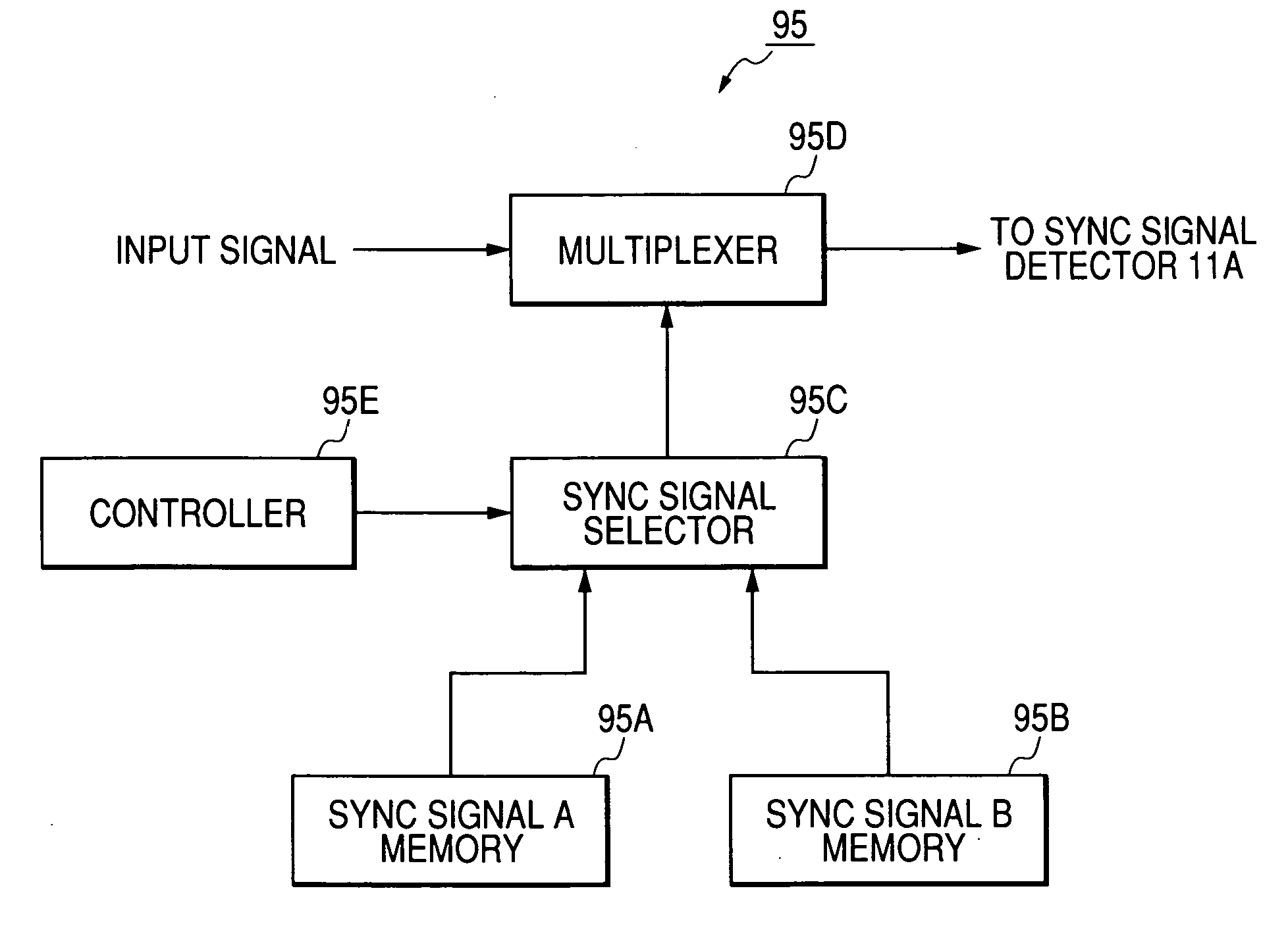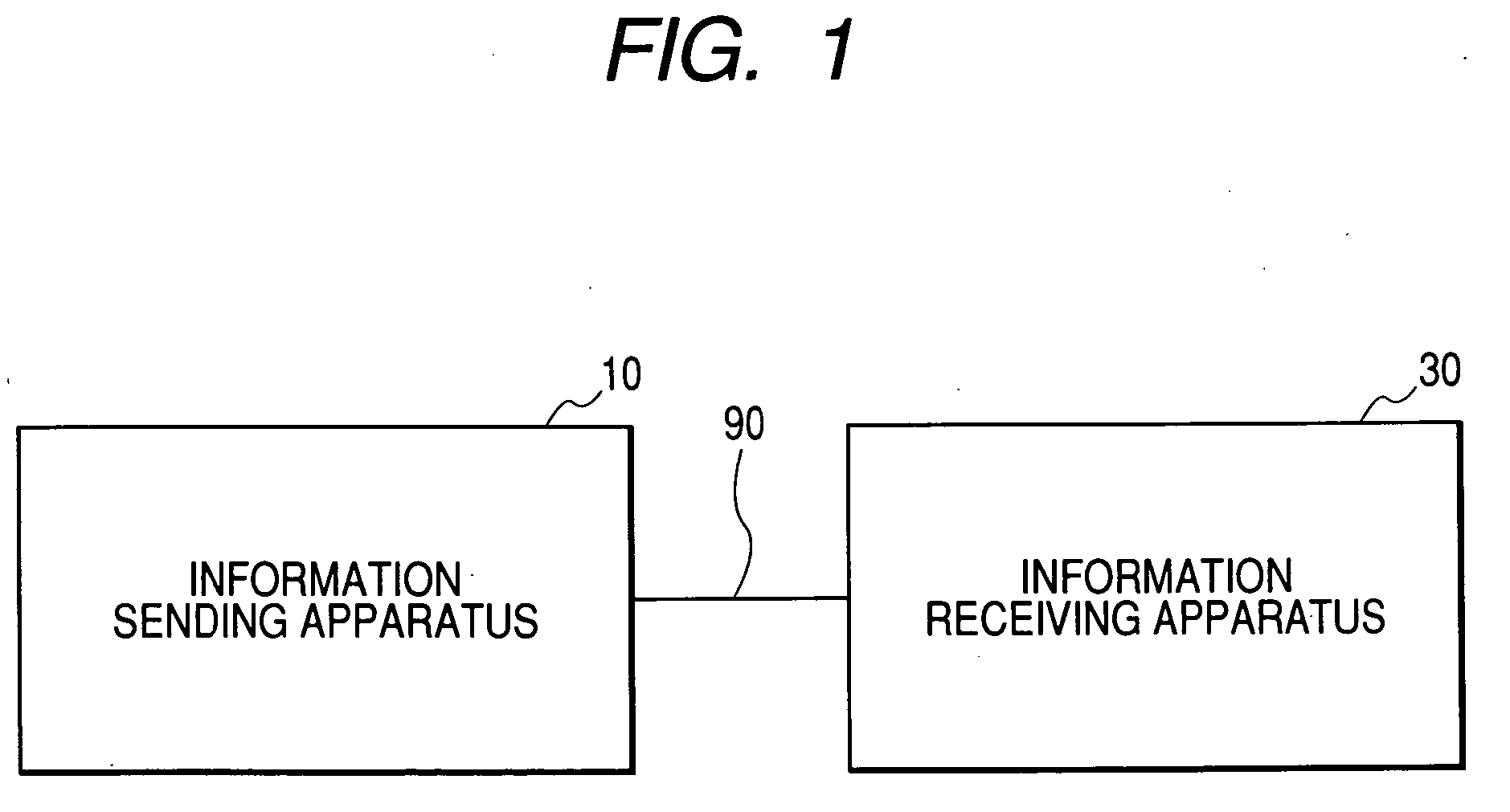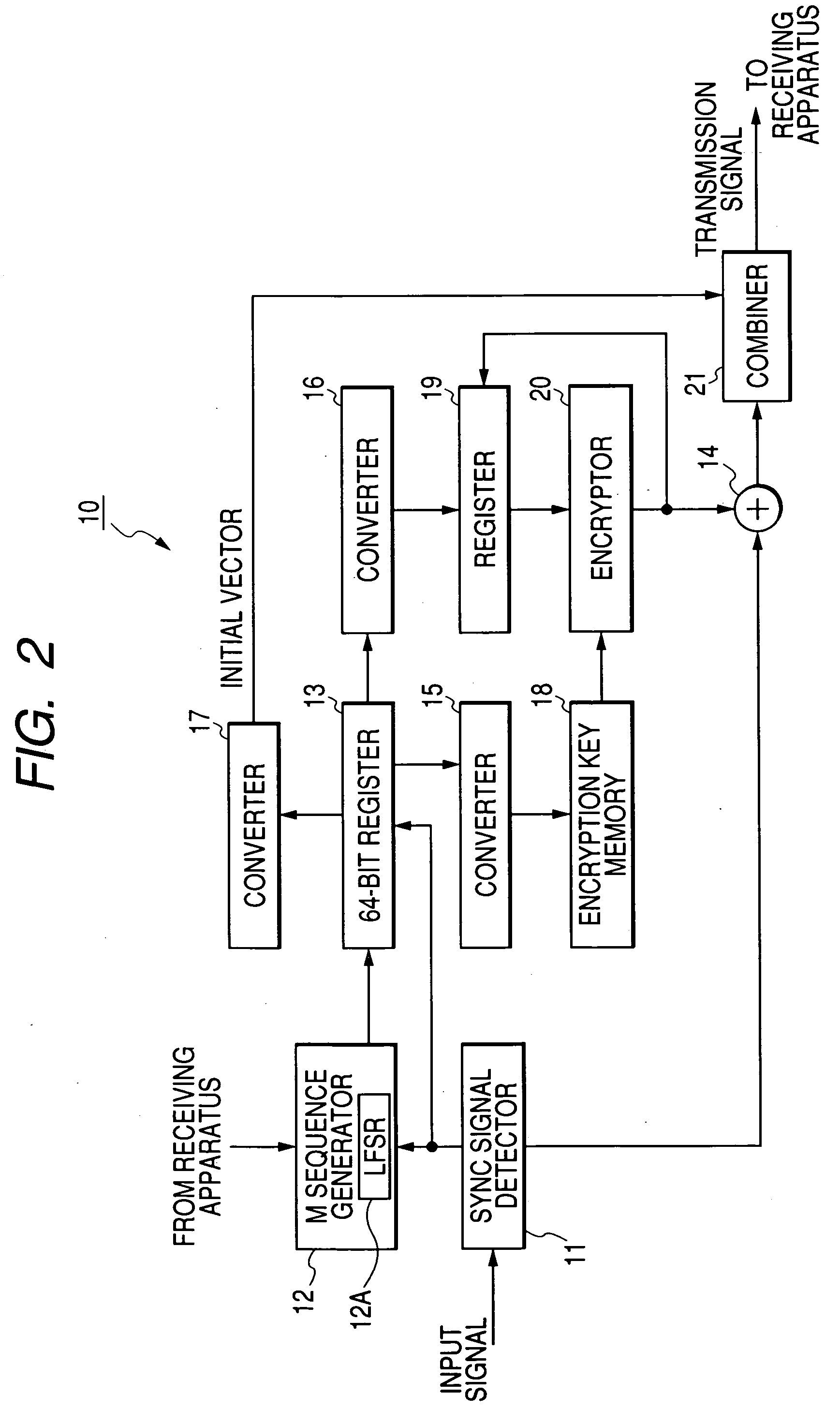Information transmission system
a technology of information transmission system and information transmission, applied in the field of information transmission system, can solve the problems of reducing the error correction capability of the des, affecting the accuracy of the information transmitted, and the calculation of authentication or certification taking a relatively long tim
- Summary
- Abstract
- Description
- Claims
- Application Information
AI Technical Summary
Benefits of technology
Problems solved by technology
Method used
Image
Examples
first embodiment
[0041]FIG. 1 shows an information transmission system according to a first embodiment of this invention. The information transmission system of FIG. 1 includes an information sending apparatus 10 and an information receiving apparatus 30 which are bidirectionally connected via a transmission line 90. The transmission line 90 may contain a communication network or a spatial transmission medium.
[0042] The information sending apparatus 10 outputs an information signal to the transmission line 90. The information signal propagates along the transmission line 90 before reaching the information receiving apparatus 30. The information receiving apparatus 30 receives the information signal from the transmission line 90.
[0043] As shown in FIG. 2, the information sending apparatus 10 includes a sync signal detector 11, a maximum length sequence generator (an M sequence generator) 12, a 64-bit register 13, an adder (a modulo-2 adder) 14, converters 15, 16, and 17, a memory 18, a register 19,...
second embodiment
[0080]FIG. 5 shows an information sending apparatus 10A in a second embodiment of this invention. The information sending apparatus 10A is similar to the information sending apparatus 10 (see FIG. 2) except for design changes mentioned hereafter.
[0081] As shown in FIG. 5, the information sending apparatus 10A includes a sync signal detector 11A, memories 18A and 18B, and a selector 18C. The sync signal detector 11A replaces the sync signal detector 11 in FIG. 2. The memories 18A and 18B are connected with the sync signal detector 11A, a converter 15, and the selector 18C. The selector 18C is connected with the sync signal detector 11A and an encryptor 20. The combination of the memories 18A and 18B, and the selector 18C replaces the memory 18 in FIG. 2.
[0082] An input signal fed to the sync signal detector 11A includes horizontal sync signals of two different types “A” and “B”, that is, horizontal sync signals “A” and horizontal sync signals “B”. The horizontal sync signals “A” di...
third embodiment
[0102] A third embodiment of this invention is similar to the second embodiment thereof except for design changes mentioned hereafter.
[0103]FIG. 8 shows an information sending apparatus 10B in the third embodiment of this invention. The information sending apparatus 10B is similar to the information sending apparatus 10A (see FIG. 5) except that a preprocessor 95 is provided. As shown in FIG. 8, the preprocessor 95 is connected with a sync signal detector 11A.
[0104] The preprocessor 95 receives an input signal including horizontal sync signals, vertical sync signals, blanking signals, and stream data such as video data. Horizontal sync signals in the input signal are of only one type. The preprocessor 95 converts the input signal into a preprocessed signal including horizontal sync signals of two different types “A” and “B”. The preprocessor 95 outputs the preprocessed signal to the sync signal detector 11A.
[0105] As shown in FIG. 9, the preprocessor 95 includes memories 95A and ...
PUM
 Login to View More
Login to View More Abstract
Description
Claims
Application Information
 Login to View More
Login to View More - R&D
- Intellectual Property
- Life Sciences
- Materials
- Tech Scout
- Unparalleled Data Quality
- Higher Quality Content
- 60% Fewer Hallucinations
Browse by: Latest US Patents, China's latest patents, Technical Efficacy Thesaurus, Application Domain, Technology Topic, Popular Technical Reports.
© 2025 PatSnap. All rights reserved.Legal|Privacy policy|Modern Slavery Act Transparency Statement|Sitemap|About US| Contact US: help@patsnap.com



